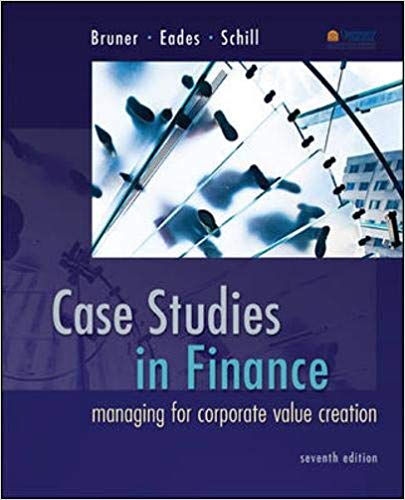1. Why did MoGen agree to issue a convertible with the wrong terms? 2. Does it appear...
Question:
1. Why did MoGen agree to issue a convertible with the “wrong” terms?
2. Does it appear that Merrill Lynch priced the 2011 and 2013 notes appropriately?
3. How can we change MoGen’s financially engineered straight bond into a convertible bond with a 50% conversion premium?
4. How much should MoGen pay to buy the call options? How much should MoGen realize from the sale of the warrants?
5. What are the critical assumptions embedded in this deal?
6. Epilogue.
In 2006, Merrill Lynch became the lead book runner for a $5 billion convertible bond issue for MoGen, Inc. This was the single, largest convertible bond issuance in history and required a considerable amount of effort on the part of Merrill Lynch’s Equity Derivatives Group to convince MoGen’s management to choose Merrill Lynch over its competitors. The case is focused on Merrill Lynch’s choice of the conversion premium and coupon rate to propose to MoGen management. This pricing decision requires students understand the concept of valuing a convertible as the sum of a straight bond plus the conversion option. Valuing the conversion option as a call option requires the estimation of the Black-Scholes model, with the volatility being a particularly challenging input.
On a strategic level, the case introduces students to the concept of matching a company’s business risk with the type of financing: equity, debt, or convertible debt. In that regard, MoGen presents the interesting financial challenge of needing a significant amount of funds for 2006 for a variety of uses, but particularly for its share repurchase plan, which was estimated as $3.5 billion for 2006.
The case is designed for students who already have a basic knowledge of bond valuation and option-pricing principles. Because the case touches on both technical and strategic issues, it works well with undergraduate, MBA, and executive education audiences. The instructor may choose to teach the case in one class period or two. For a one-class experience, Exhibit TN1 serves as the epilogue to hand out at the end of class, whereas for a two-class experience Exhibit TN1 serves as a handout and the beginning point for an assignment for the following class. When taught over two classes, the second class deals with the financial-engineering issues resulting from using derivatives to increase MoGen’s conversion premium from 11% (the actual premium) to 50%. Thus the second class should provide strong reinforcement of option-pricing principles by demonstrating how an investment bank can reconstruct a security by taking long or short positions in puts or call options.
CouponA coupon or coupon payment is the annual interest rate paid on a bond, expressed as a percentage of the face value and paid from issue date until maturity. Coupons are usually referred to in terms of the coupon rate (the sum of coupons paid in a...
Step by Step Answer:

Case Studies in Finance Managing for Corporate Value Creation
ISBN: 978-0077861711
7th edition
Authors: Robert F. Bruner, Kenneth Eades, Michael Schill





